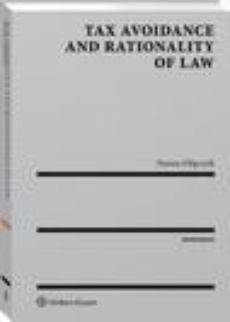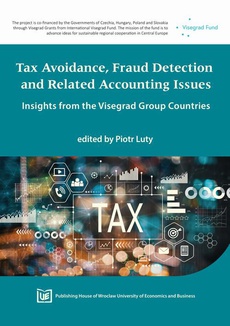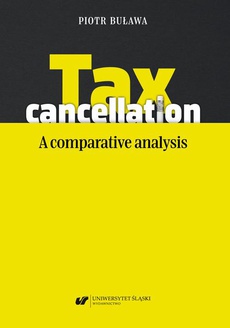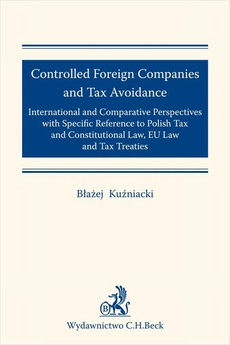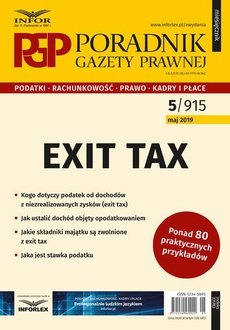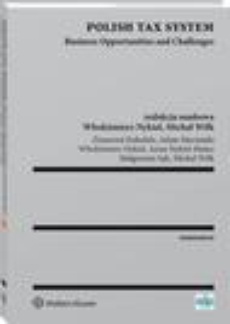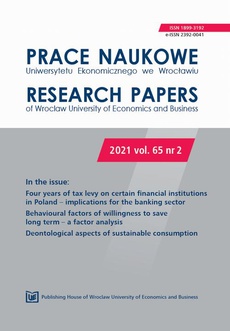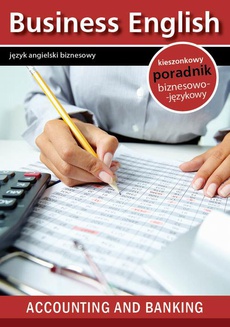POLECAMY
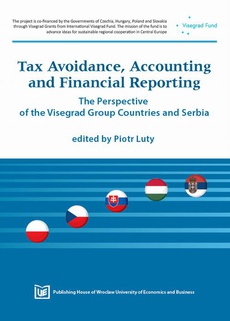
Tax Avoidance, Accounting and Financial Reporting. The Perspective of the Visegrad Group Countries and Serbia
Redakcja:
Format:
ibuk
Jest to pierwsza z trzech monografii poświęconych unikaniu opodatkowania w krajach Europy Środkowej i Wschodniej, finansowana w ramach projektu z Międzynarodowego Funduszu Wyszehradzkiego. Autorami rozdziałów są naukowcy w Polski, Czech, Serbii i Portugalii. Prezentowane w niej zagadnienia obejmują unikanie opodatkowania z perspektywy podstawowego systemu informacyjnego spółek – systemu rachunkowości. W książce mówiono wartości niematerialne i prawne oraz rzeczowe aktywa trwałe w kontekście unikania opodatkowania, a także poruszono zagadnienie raportowania finansowego w kontekście ustalania efektywnej stopy opodatkowania
| Rok wydania | 2021 |
|---|---|
| Liczba stron | 94 |
| Kategoria | Publikacje darmowe |
| Wydawca | Wydawnictwo Uniwersytetu Ekonomicznego we Wrocławiu |
| ISBN-13 | 978-83-7695-930-6 |
| Numer wydania | 1 |
| Język publikacji | polski |
| Informacja o sprzedawcy | ePWN sp. z o.o. |
Ciekawe propozycje
Spis treści
| Introduction (Piotr Luty) | 7 |
| 1. Review of research on tax avoidance and accounting (Piotr Luty, Rui Costa) 9 | |
| 1.1. Introduction | 9 |
| 1.2. Tax avoidance in studies by researchers from the Visegrad Group and Serbia | 9 |
| 1.3. Tax avoidance in accounting studies by researchers from the Visegrad Group and Serbia | 13 |
| 1.4. Conclusions | 16 |
| References | 17 |
| 2. Adoption of IFRS or US GAAP on intangible assets and the potential effect on the final result. A theoretical overview (Miloš Petković, Ana Obradović) 18 | |
| 2.1. The role of intangibles in the corporate world | 18 |
| 2.1.1. Determination of intangible assets 20s | |
| 2.1.2. Characteristics of intangible assets | 22 |
| 2.2. IFRS on intangible assets | 26 |
| 2.3. US GAAP on intangible assets | 29 |
| 2.4. Differences and similarities between IFRS and US GAAP | 31 |
| 2.5. Relations between intangible assets and final result | 32 |
| 2.6. Conclusions | 35 |
| References | 35 |
| 3. Comparability of financial statements in the area of intangible assets in different financial reporting systems (Patrik Svoboda) | 41 |
| 3.1. Introduction | 41 |
| 3.2. Intangible assets in IAS/IFRS and US GAAP | 44 |
| 3.3. Intangible assets according to IFRS for SMEs | 51 |
| 3.4. The situation in selected V4 countries | 52 |
| 3.5. The situation in IAS/IFRS | 57 |
| References | 62 |
| 4. Property, plant and equipment – possibilities of influencing the financial results of entities under Polish accounting regulations and IAS 16 (including Polish tax law regulations) (Przemysław Czajor) | 63 |
| 4.1. Introduction | 63 |
| 4.2. The areas of the accounting principles of fixed assets | 65 |
| 4.2.1. Recognition of an asset as an item of PP&E | 65 |
| 4.2.2. Initial recognition | 65 |
| 4.3. Measurement after initial recognition | 67 |
| 4.3.1. Revaluation model | 68 |
| 4.3.2. Cost model | 69 |
| 4.3.3. Other costs concerning the use of PP&E | 72 |
| 4.4. PP&E from the perspective of the Corporate Income Tax Act | 73 |
| 4.4.1. Initial recognition | 73 |
| 4.4.2. Depreciation and other costs incurred after initial recognition | 74 |
| 4.5. Conclusions | 75 |
| References | 76 |
| 5. Corporate tax reporting: effective tax rate of Serbian business entities (Goranka Knežević, Vule Mizdraković) 78 | |
| 5.1. Introduction | 78 |
| 5.2. Procedure of corporate income tax calculation in the Republic of Serbia | 79 |
| 5.2.1. Calculation of the tax base | 80 |
| 5.2.2. Statutory and effective tax rate of the Republic of Serbia and other countries | 81 |
| 5.3. Adjustments of revenues and expenses in the tax balance | 84 |
| 5.4. Literature review | 85 |
| 5.5. Research on the management of an effective tax rate of Serbian business entities | 86 |
| 5.5.1. Research methodology | 87 |
| 5.5.2. Research results | 87 |
| 5.6. Conclusions | 89 |
| References | 90 |
| Summary | 92 |
| List of figures | 94 |
| List of tables | 94 |















